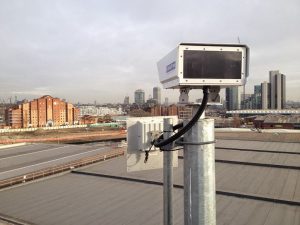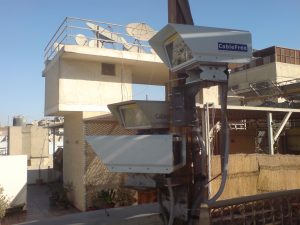FSO in Metro Networks

Free-space optics technology (FSO) has several applications in communications networks, where a connectivity gap exists between the network core and network edge. FSO Optical Wireless technology delivers cost-effective optical wireless connectivity and a faster return on investment (ROI) for enterprises and service providers. With the ever-increasing demand for greater bandwidth by enterprise and end-user customers — for LAN connectivity and for access to fiber backbones — comes a critical need for FSO-based products with unsurpassed reliability and high-speed connectivity for the “last mile.”
During the last few years, the number of uses of this valuable technology in communications networks has dramatically grown. In fact, many believe that FSO Free Space Optics technology has moved from niche to mainstream.
Here are some of the many uses for FSO:
Telecom network extensions: FSO technology and optical wireless products can be deployed to extend an existing metro ring or to connect new networks. These links generally do not reach the ultimate end user, but are more an application for the core of the network.
Enterprise:
Because of the scalability and flexibility of FSO technology, optical wireless products can be deployed in many enterprise applications including building-to-building connectivity, disaster recovery, network redundancy, Wi-Fi connectivity, and network portability.
“Last mile” connectivity:
These are the links that reach the end user. Optical Wireless can deployed in point-to-point, point-to-multipoint, ring or mesh connections. Fiber deployment in urban areas could cost $300,000 to $700,000 given the costs involved in digging tunnels and obtaining rights-of-way. By contrast, a short optical wireless link of 155 Mbps might cost only $15,000 to $18,000.
Fiber Complement:

Optical wireless products may also be deployed as a redundant link to back up fiber. Most service provider operators deploying fiber for business applications connect two fibers to secure a reliable service plus backup in the event of outage. Instead of deploying two fiber links, operators could opt to deploy an FSO-based optical wireless system as the redundant link.
Last-Mile Access:
Optical wireless products can also be deployed in access applications such as gigabit Ethernet access. Service providers can use FSO technology to provide high capacity links to businesses.
FSO for Backhaul:
FSO technology can be used for backhaul such as LMDS or cellular backhaul as well as gigabit Ethernet “off-net” to transport network backhaul.
DWDM Services:
With the integration of WDM and FSO systems, independent players aim to build their own fiber rings, yet they may own only part of the ring. Such a solution could save costly lease payment to ILECs, which are likely to take advantage of this situation.
Mobile Wireless Networks: 2G, 3G, 4G, LTE, 5G
FSO-based products can be used for mobile wireless backhaul for today’s network and next-generation architectures, including applications for BTS Backhaul; temporary service; WLAN “hot spot” connectivity; sector re-use, and BTS “hoteling” with CPRI interfaces for “Front Haul” Applications
For Further Information
For more information on Carrier Class FSO, please Contact Us
You must be logged in to post a comment.